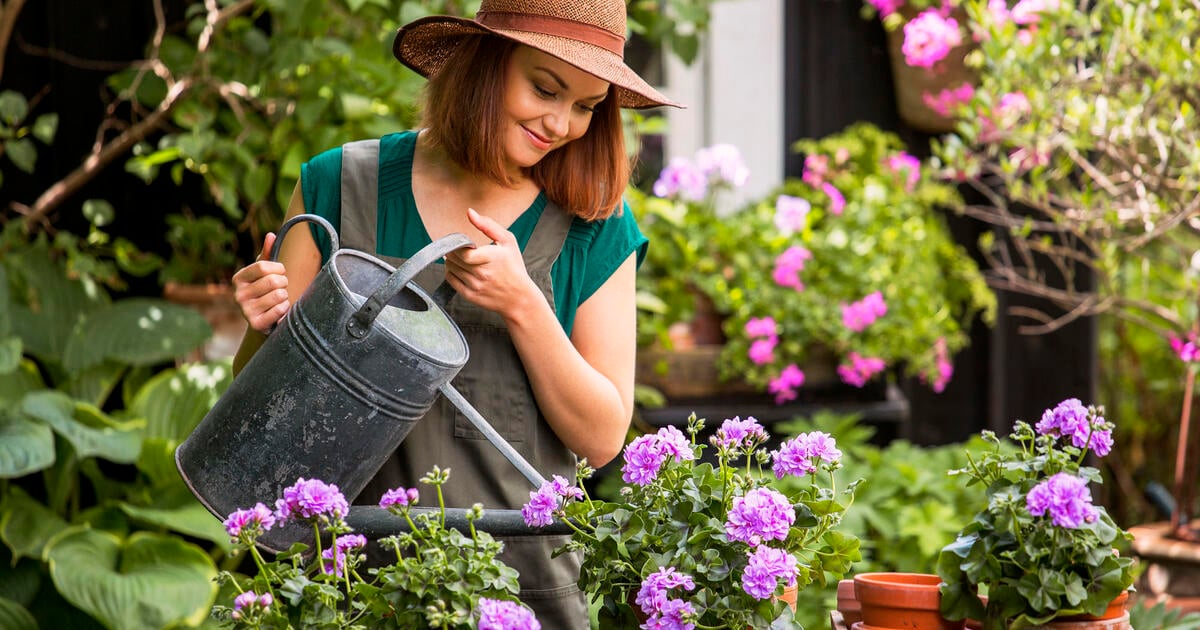Home gardening has experienced a resurgence in popularity, with more individuals embracing the joy of cultivating their own green spaces. As people seek to connect with nature, enhance their living environments, and adopt sustainable practices, new trends in home gardening have emerged to inspire creativity, functionality, and eco-consciousness. From innovative urban gardening solutions to plant-based wellness practices, the trends in home gardening are shaping the way we interact with our outdoor spaces. Let’s explore the latest trends in home gardening that are redefining the art of cultivating and nurturing green spaces within our homes.
1. Vertical Gardening:
Vertical gardening has gained traction as a space-saving and visually appealing solution for urban dwellers and those with limited outdoor areas. By utilizing walls, trellises, and hanging planters, vertical gardening allows individuals to grow a variety of plants vertically, maximizing space and adding a decorative touch to indoor and outdoor spaces. With the rise of vertical gardening systems and modular planters, homeowners can create lush green walls, herb gardens, and floral displays that bring nature indoors and transform compact spaces into vibrant botanical sanctuaries.
2. Edible Landscaping:
Edible landscaping is a growing trend that combines ornamental plants with edible crops to create functional, sustainable, and aesthetically pleasing garden designs. By integrating fruits, vegetables, and herbs into traditional landscape plantings, homeowners can enjoy a bountiful harvest of fresh produce while enhancing the beauty and diversity of their outdoor spaces. Edible landscaping promotes self-sufficiency, biodiversity, and food security, allowing individuals to cultivate and enjoy homegrown fruits and vegetables within a visually appealing and productive garden setting.
3. Indoor Gardening:
Indoor gardening has become increasingly popular, as more people seek to bring the benefits of plants and greenery into their homes. From houseplants and terrariums to herb gardens and succulent displays, indoor gardening offers a way to enhance indoor air quality, boost mood and well-being, and infuse living spaces with natural beauty. With the advent of self-watering planters, grow lights, and vertical plant walls, homeowners can create thriving indoor gardens that thrive year-round, adding a touch of nature and tranquility to their indoor environments.
4. Pollinator Gardens:
Pollinator gardens are designed to attract and support bees, butterflies, hummingbirds, and other beneficial pollinators that play a crucial role in ecosystem health and food production. By incorporating native plants, flowers, and shrubs that provide nectar, pollen, and habitat for pollinators, homeowners can create vibrant and biodiverse garden spaces that support pollinator populations and enhance garden productivity. Pollinator gardens promote ecological balance, plant health, and biodiversity conservation, highlighting the importance of cultivating gardens that support wildlife and environmental sustainability.

5. Eco-Friendly Practices:
Eco-friendly gardening practices are on the rise, as more gardeners prioritize sustainability, conservation, and environmental stewardship in their gardening routines. From composting and rainwater harvesting to using organic fertilizers and natural pest control methods, eco-friendly gardeners strive to reduce waste, conserve resources, and minimize environmental impact in their gardening practices. By adopting eco-friendly gardening practices, homeowners can create healthy, thriving garden ecosystems that support biodiversity, soil health, and ecosystem resilience while minimizing their carbon footprint and promoting sustainable land stewardship.
6. Container Gardening:
Container gardening offers a versatile and flexible solution for homeowners who want to grow plants in small spaces, on patios, balconies, and rooftop gardens. With a wide variety of containers, pots, and planters available, container gardening allows individuals to cultivate herbs, flowers, vegetables, and small trees in portable and customizable growing spaces. By using containers with proper drainage, quality soil, and strategic placement, homeowners can create beautiful container gardens that add color, texture, and functionality to their outdoor and indoor living areas.
7. Native Plant Landscaping:
Native plant landscaping is a trending approach to garden design that focuses on incorporating regionally adapted and indigenous plant species into outdoor spaces. By selecting native plants that thrive in local climates, soil conditions, and ecosystems, homeowners can create sustainable, low-maintenance garden landscapes that support local wildlife, conserve water, and enhance biodiversity. Native plant landscaping promotes habitat restoration, pollinator support, and environmental sustainability in home gardens, fostering a connection to the natural beauty and diversity of the local landscape.
8. Tech-Integrated Gardening:
Tech-integrated gardening solutions are revolutionizing the way homeowners cultivate, monitor, and maintain their gardens through the use of smart devices, sensors, and digital tools. From automated irrigation systems and smart planters to gardening apps and weather monitoring devices, tech-integrated gardening offers convenience, efficiency, and precision in garden management. By leveraging technology to optimize watering schedules, track plant growth, and receive real-time gardening advice, homeowners can create thriving and well-tended gardens that flourish with minimal effort and greater success.
9. Sustainable Landscaping Design:
Sustainable landscaping design focuses on creating outdoor spaces that enhance ecological health, conserve resources, and promote environmental sustainability. By incorporating native plants, permeable surfaces, rain gardens, and wildlife habitats into landscape designs, homeowners can reduce water usage, prevent soil erosion, and support biodiversity in their outdoor environments. Sustainable landscaping design emphasizes the importance of creating functional and beautiful garden landscapes that contribute to ecosystem health, climate resilience, and sustainable land use practices.

10. Community Gardening Initiatives:
Community gardening initiatives are fostering a sense of community, collaboration, and environmental stewardship by bringing individuals together to cultivate shared garden spaces. Community gardens provide opportunities for neighbors to grow food, flowers, and herbs collectively, share resources and knowledge, and connect with nature and each other. By participating in community gardening initiatives, individuals can build relationships, promote local food production, and contribute to neighborhood greening efforts, creating vibrant and inclusive garden spaces that enrich the community and foster a sense of belonging.
Conclusion:
Trends in home gardening are evolving to reflect a growing interest in sustainability, creativity, and personal well-being through garden cultivation. From vertical gardening and edible landscaping to indoor gardening and tech-integrated solutions, the trends in home gardening offer innovative and inspiring ways to connect with nature, enhance living spaces, and cultivate a deeper appreciation for the natural world. By embracing these trends, homeowners can create vibrant, functional, and eco-conscious garden spaces that support biodiversity, sustainability, and well-being, transforming their homes into green sanctuaries of beauty and tranquility.




